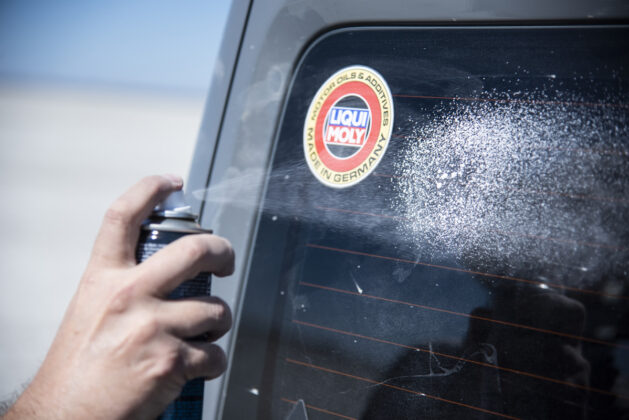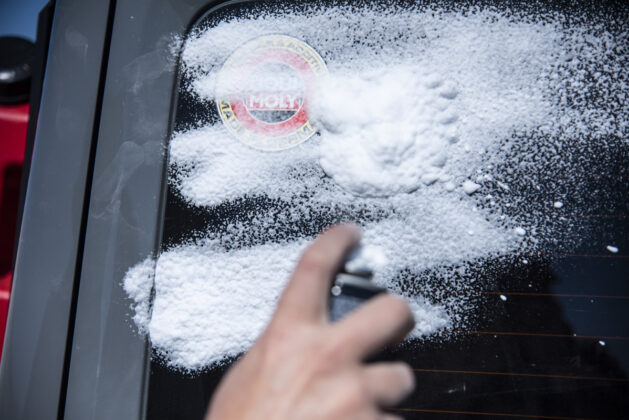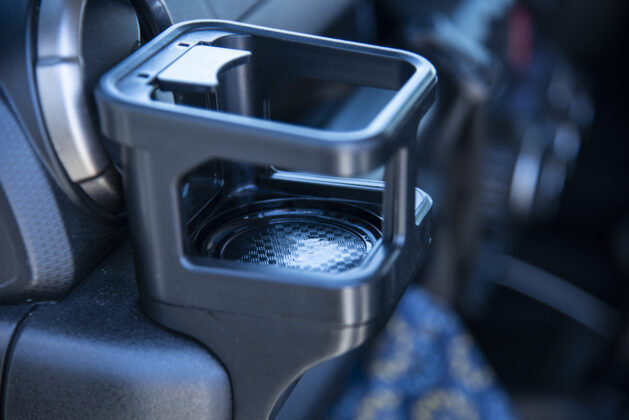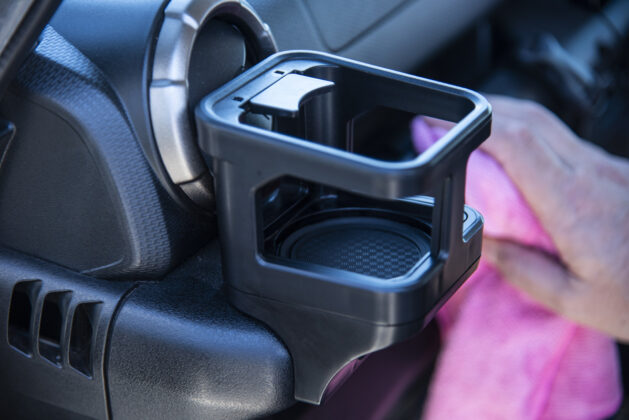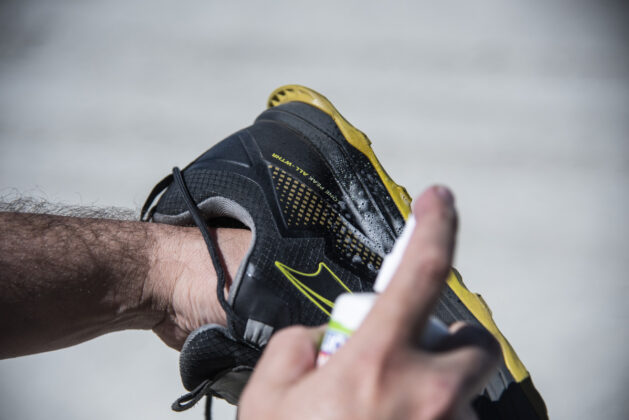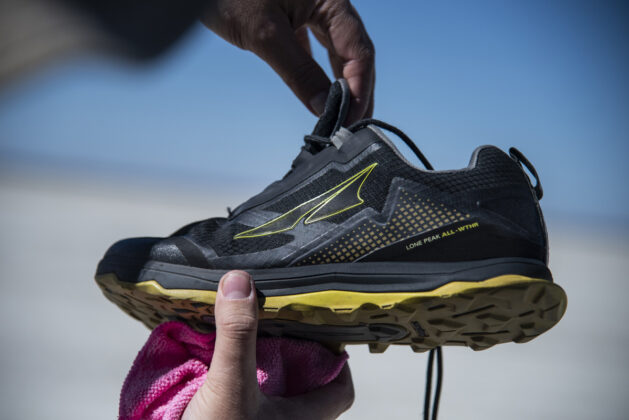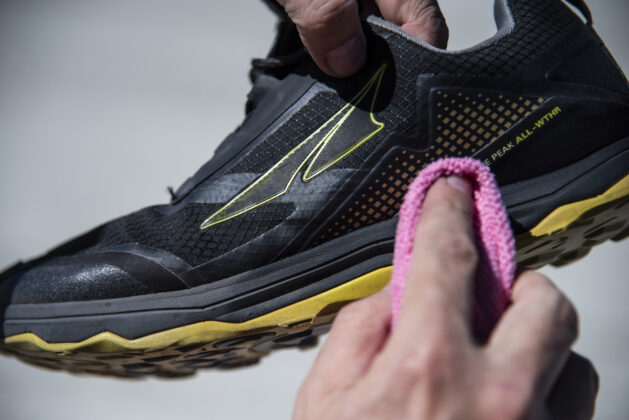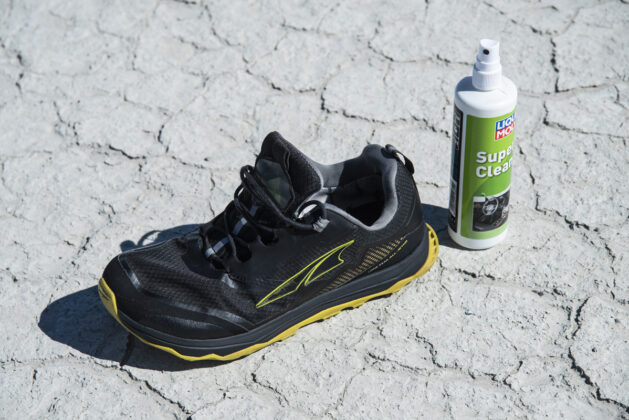
Solitude: “the state or situation of being alone”.
Botswana holds a special place in my heart. Over the years, I’ve been there numerous times, the first was back in 2011, with my colleague Dave “Mr Botswana” Cilliers, who took a group of us on small cc motorcycles up to the top of Botswana and into Zimbabwe to visit Victoria Falls.
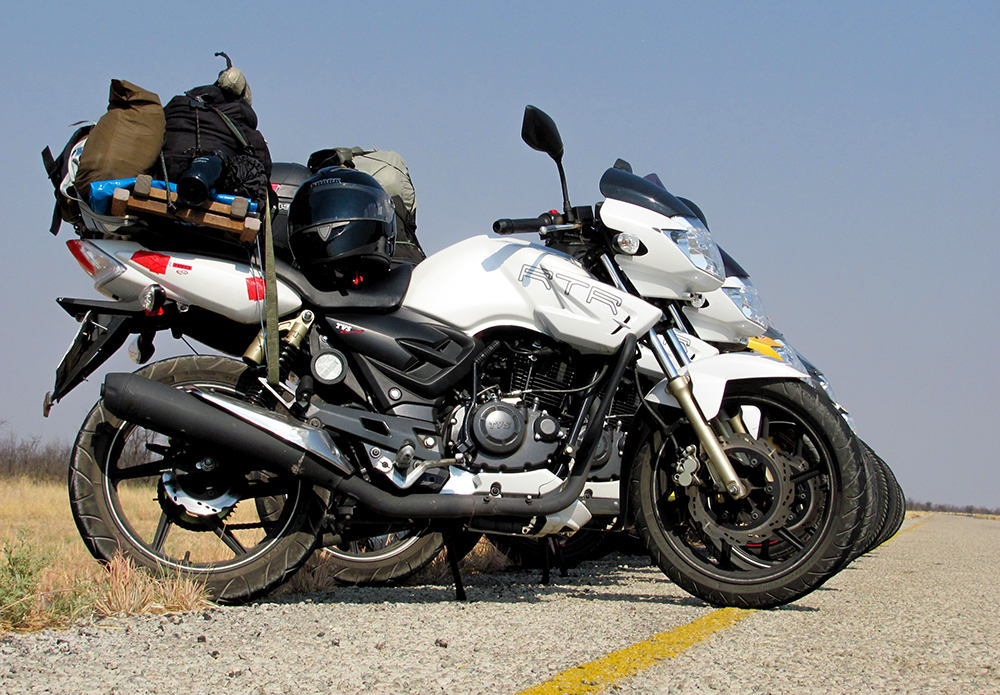
The further north we travelled, the wilder things got. I was so blown away by the vastness, and how big the sky was in comparison to the land around us. I remember riding somewhere between Nata and Kasane, the road was so straight and long and the scenery around didn’t change for a good 100km or so, you look forward and can see as far as the road points with the heat simmering off the hot tar, looking into the rearview mirror and the same in reverse, this went on for a good hour or so—an uncanny experience that I will never forget.
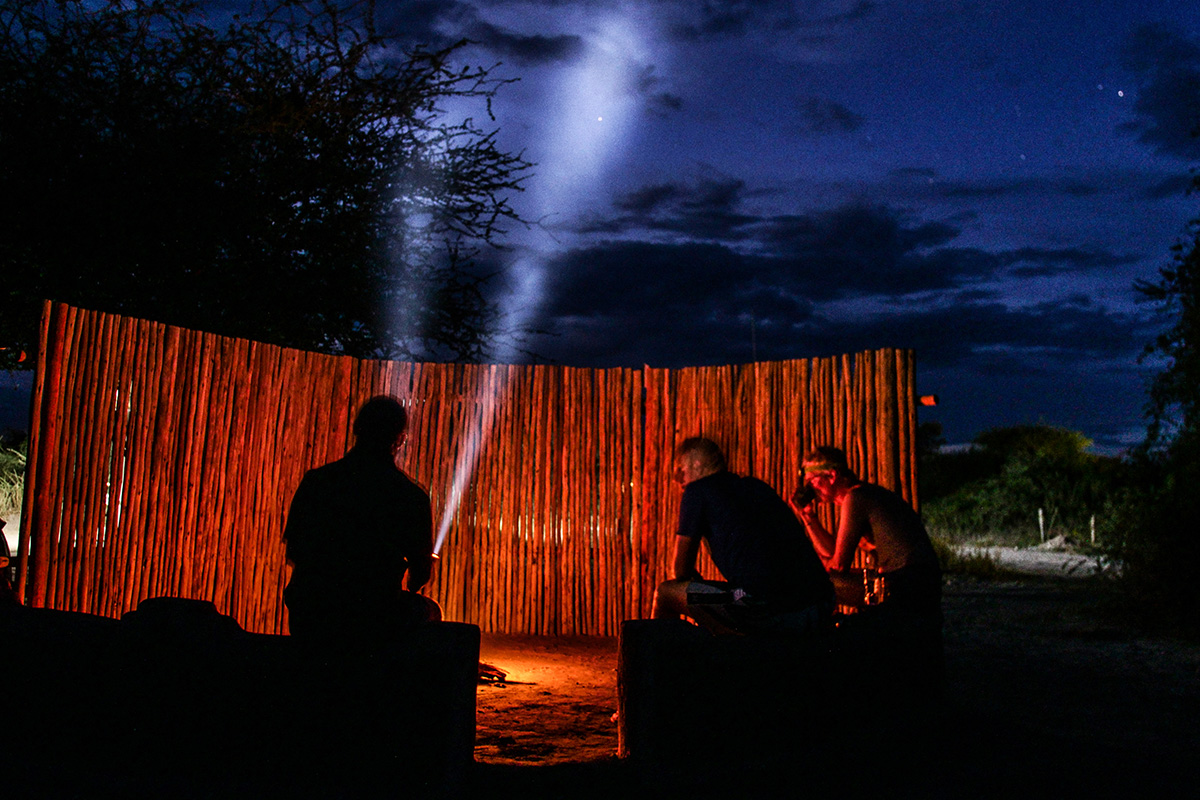
Nighttime was the best for me, the sky was so big! that you could see so much of the universe above you, and the sunsets/rises, with its soft pastel pinkish glow… Botswana is truly a magical place!

In 2019, going into 2020, A few of us mates went back up for a boy’s camping trip, this time on retro motorcycles. On New Year’s Day, myself and Bjorn headed out to the Makgadikgadi Pans, I’d previously only gone onto the salt pans during the winter months, so I didn’t anticipate how they would differ in the rainy season. As we rode onto the pan everything was dry, so we hooked it into top gear and were flying along like two Bonneville land speed racers when out of nowhere, two Springboks came running out in front of us, we chased them for a while—which got us disorientated—then when we looked back at where we’d come from, we followed what we thought was the way, to which, when trying to exit the pan off the shoreline, one of the bikes got stuck as it was much wetter than where we had entered from.
Long story short. After spending several hours trying to retrieve the bike, and not having any water left, which under 40-degree heat conditions wasn’t a good situation to be in, we decided to rather leave the bike behind and try and save ourselves.

Our remaining bike was still dry, albeit the fuel light had just come on, so after much deliberation, we decided to follow the shoreline towards the right as going left seemed to be getting wetter. After about 5km of following the shoreline, we then saw jeep tracks which we followed back to safety.
Over the next few days, we hired some locals who helped us rescue the bike from the pan, and then drop it at the border where it was then collected by Bjorn’s dad in my—at the time—Ford van, who had driven up from Pretoria to help us with the rescue mission.
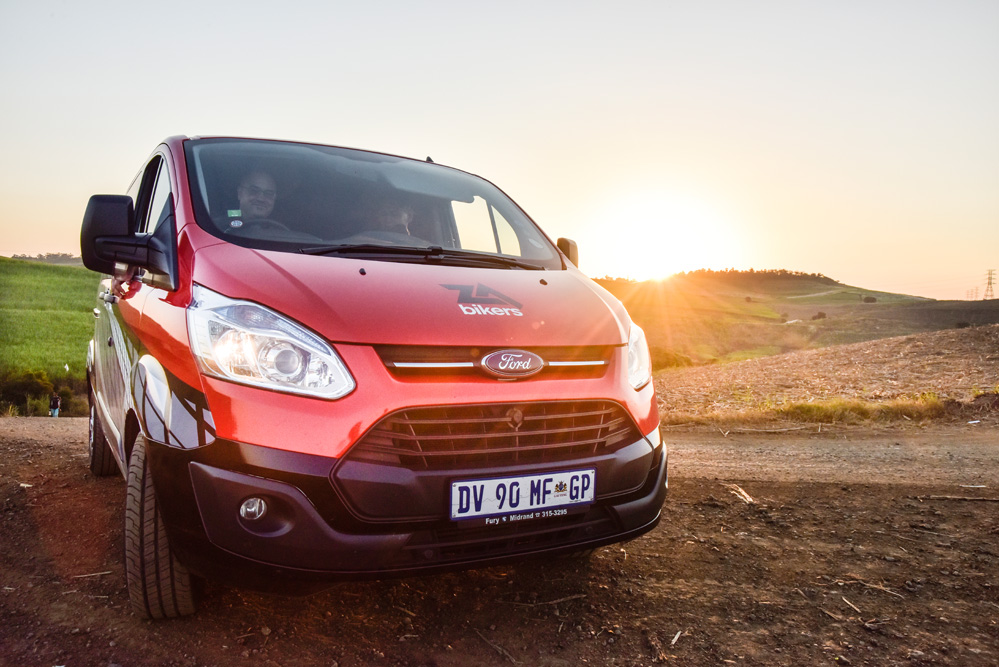
A cheap camping trip with the boys turned out to be a very expensive exercise, however, we had learnt some very hard lessons that day and were just grateful to have gotten out of the situation unscathed—a true African adventure!
Fast track to the present time, and now living in the big smoke of Jo’burg, with all of life’s wonderful challenges, I was feeling my heartstrings gravitating again towards Botswana. Previously, I’ve only gone up there by bike, however this time, I was keen to go up in our Suzuki Jimny. As readers of our platform will know, we’ve done many practical upgrades to our Jimny, therefore, I was excited to put our little micro-overlander to the test.
Not having a lot of time available and not wanting to drive crazy kilometres, a 5-day/2000km trip was planned which would head up north from Johannesburg to the beautiful region of Nata.

Day 01:
We headed out of Johannesburg on the N1 highway towards Bela-Bela, from there we veered left towards Vaal Water/Lephalale, the scenery in this region is stunning, with game reserves on either side of the road and rolling hills ahead—it’s a really pleasant drive. From there we headed to Martin’s Drift border post, all-in-all, the distance was 432km which took around 5 hours at our relatively chilled Jimny driving pace.
If like me you’re not into doing hectic long-distance driving then I would highly recommend staying at Kwa Nokeng Lodge which is on the Limpopo River, we stayed in a river cottage and found the facility to be clean, and reasonably priced with the service/food being top notch.
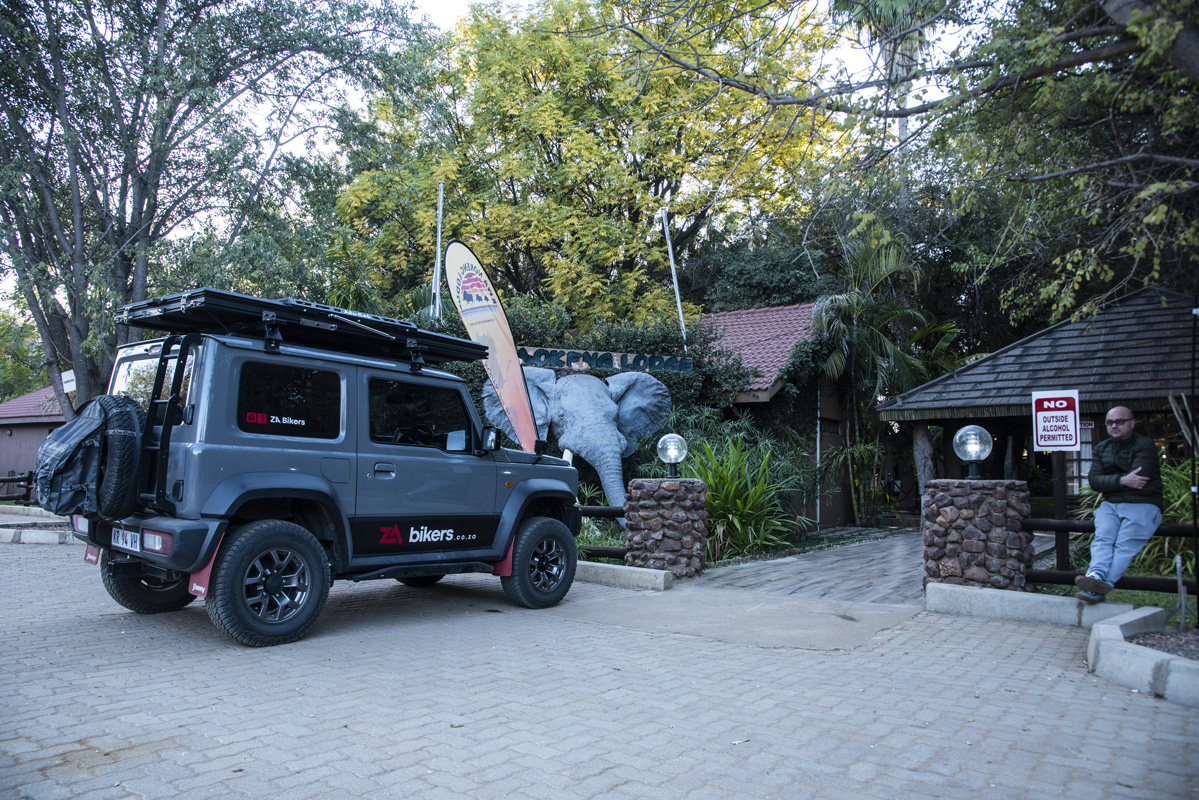
Day 2:
Day 2’s route took us from Sherwood for about 100km on a very straight road through to Palapye, from there we headed towards Francistown on a busy dual carriageway type road and, once through Francistown, the road to Nata begins… This is when you ‘really’ start to feel like you’re in Botswana when you see your first ilala palm trees and the sides of the road change to this lovely white sandy look.
Just outside of Nata, we see our first Elephant sighting. It always amazes me knowing that I’ve driven on only tar roads approx. 900km from my front door and not into any fenced game reserve—only public roads travelled—and right there next to the main road travelling north up through Botswana are Elephants, we are truly blessed living here in Africa.
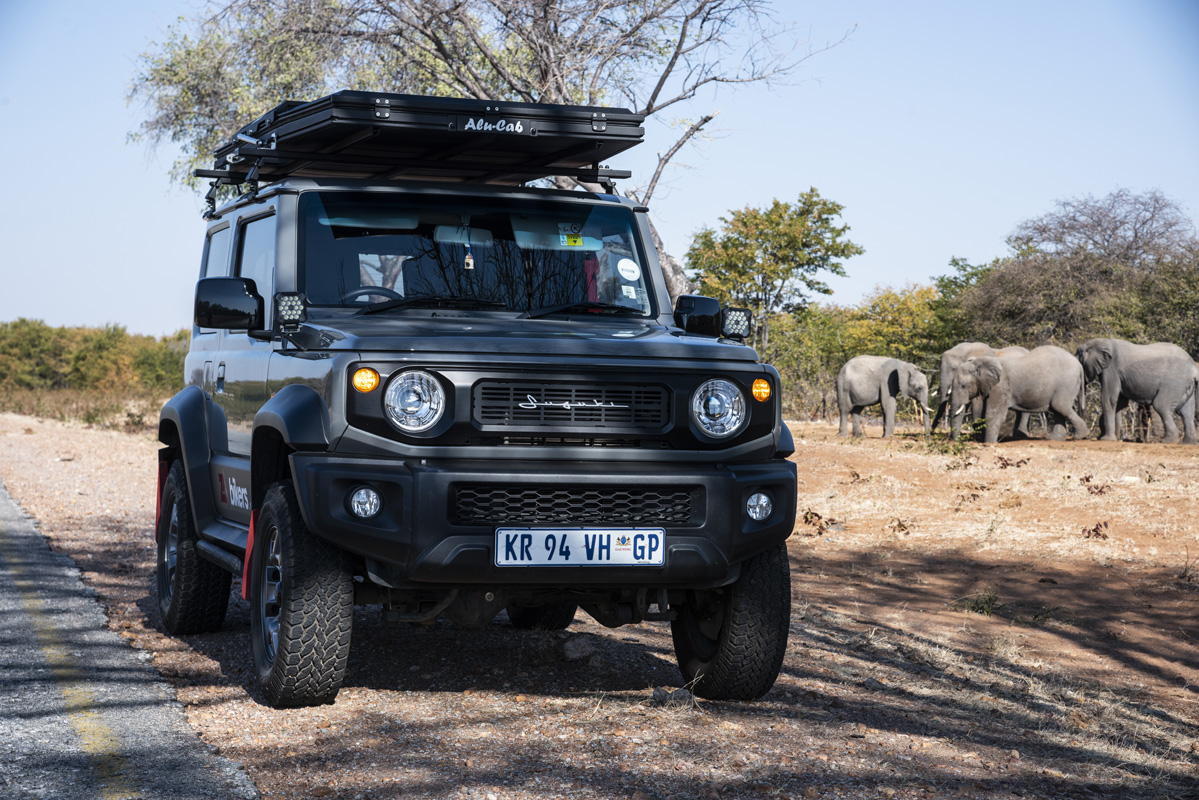
In the mid-afternoon, having driven a distance of 452km, we pull into Nata Lodge. Nata Lodge also holds a very special place in my heart, as it’s the place of refuge we sought after our biking fiasco at the beginning of 2020. We stayed there for a few nights and I can honestly tell you that the hospitality at Nata Lodge is excellent!
The camping was outstanding, the grounds are very sandy and full of indigenous trees, with monkeys and bush babies floating around in the branches. The ablution areas are impeccable, and if like us you don’t feel like cooking—as we’d packed very light—then there’s an excellent bar/restaurant that serves very good food.

Setting up camp is always a pleasure with our Alu-cab LT-50 Roof Top Tent, it’s as simple as finding the right place to park—preferably on some flattish ground—then just open the clips, push, and let the hydraulic arms take care of the rest. For me, it’s so lekker having your creature comforts with you when out in the wild, it’s certainly more of a ‘glamping’ experience. Bjorn on the other hand with his ground tent, took a lot longer to set up camp.

As the sun went down, we got a fire going and just enjoyed the moment. There’s nothing quite like sitting around a campfire sipping on a glass of Red, whilst listening to the sounds of the bush underneath the big universe that’s on full display from above—absolute bliss!
Day 3:
Waking up at the camp was superb. We packed up, showered and had breakfast at the lodge before heading out to Nata Bird Sanctuary. The entrance gate is only 10km back down from where we’d come. Entering the Sanctuary, we followed the jeep tracks over to the lookout points and then drove on to the pan for about 10km or so. As it was in June, I knew there wouldn’t be any water as it hadn’t rained for months.
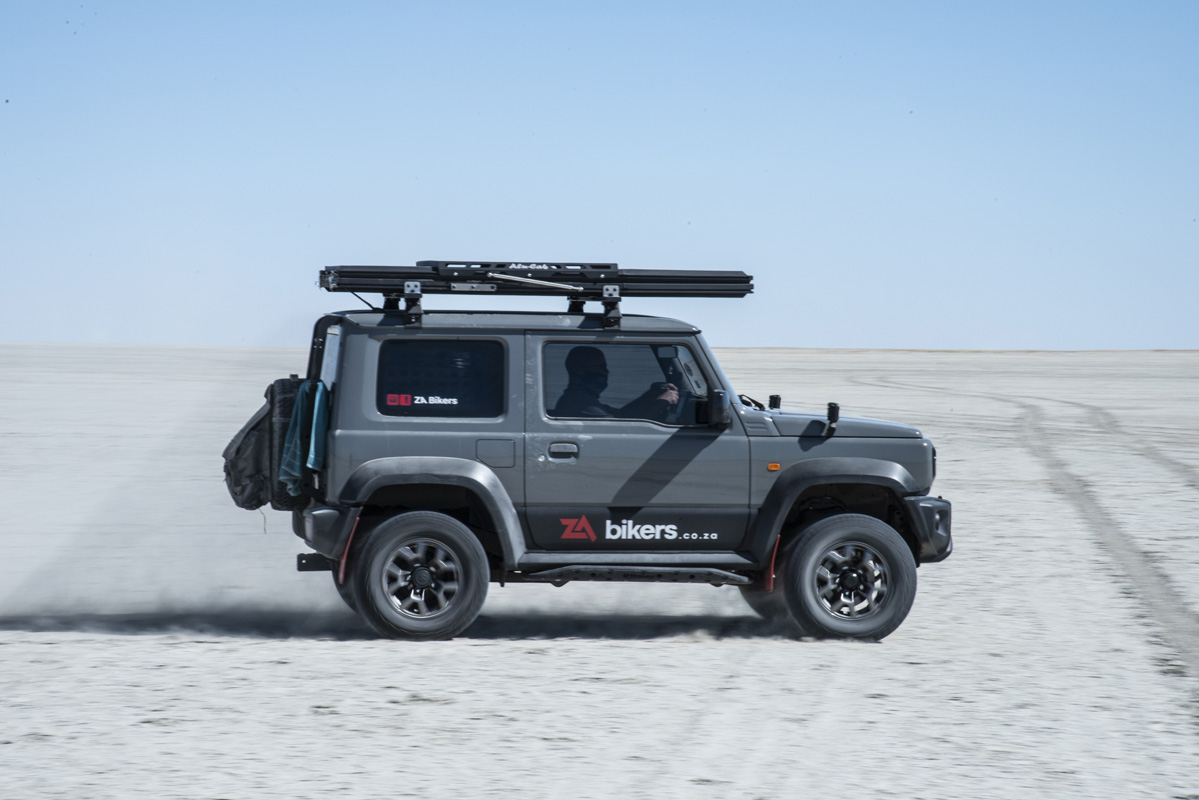
Since our adventures in 2020, the Makgadikgadi Pans have become a spiritual place for me, so going there again was exciting! What’s handy about having the LT-50 is that you can set up a day bed in minutes and be protected from harsh environments, such as the Makgadikgadi pans. I spent a few hours on the pan just grounding myself away from all the hustle and bustle of city life, and yeah, just having some much-needed headspace—reflecting on life and resetting the body & mind. The solitude on the pans is just out-of-this-world, it feels like you could be on the moon.
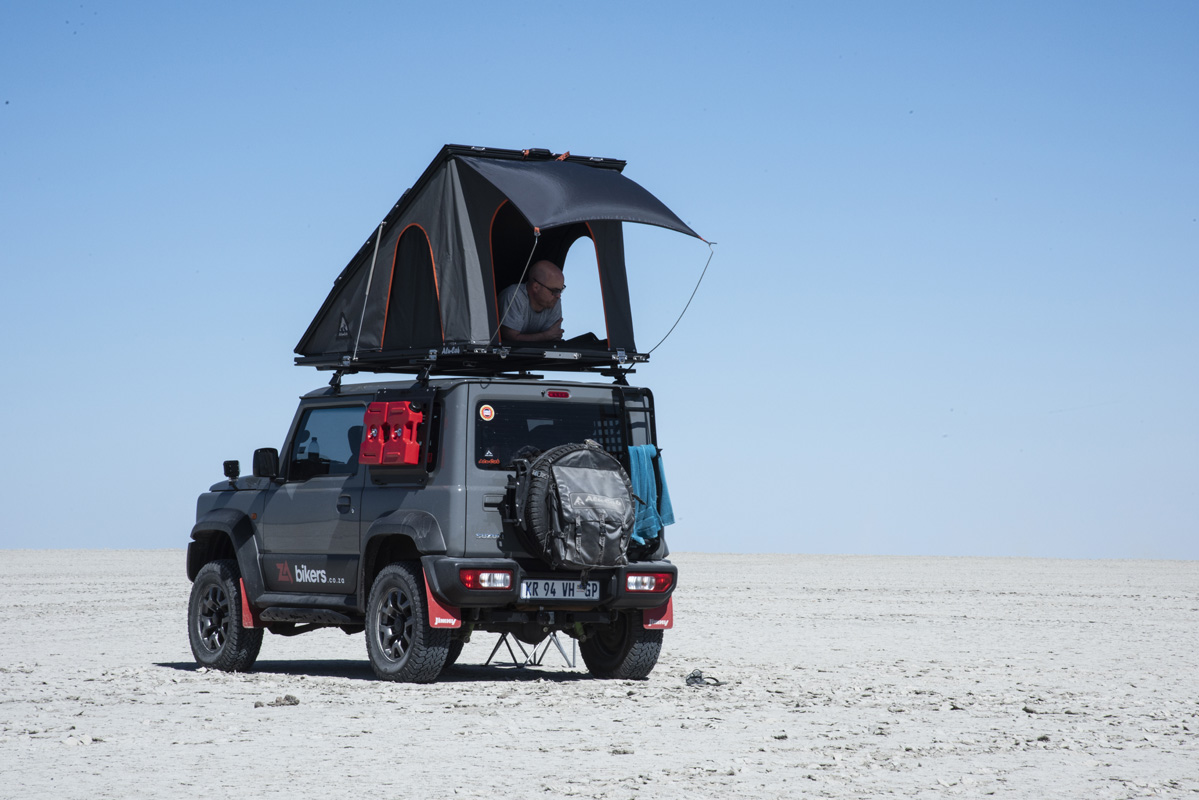
Around lunchtime, we headed out and up to Elephant Sands which is 75km away, back past Nata Lodge. The road into Elephant Sands is very sandy and quite deep in parts, however, no problem whatsoever for our micro-overlander.

Elephant Sands is such a special place, if you’ve never been then put it on your bucket list, it’s only 940km from Johannesburg. It’s not a fenced-in lodge, all the Elephants are wild, they come because the owners pump water for them into a water hole, so there are always very tame Elephants coming and going.
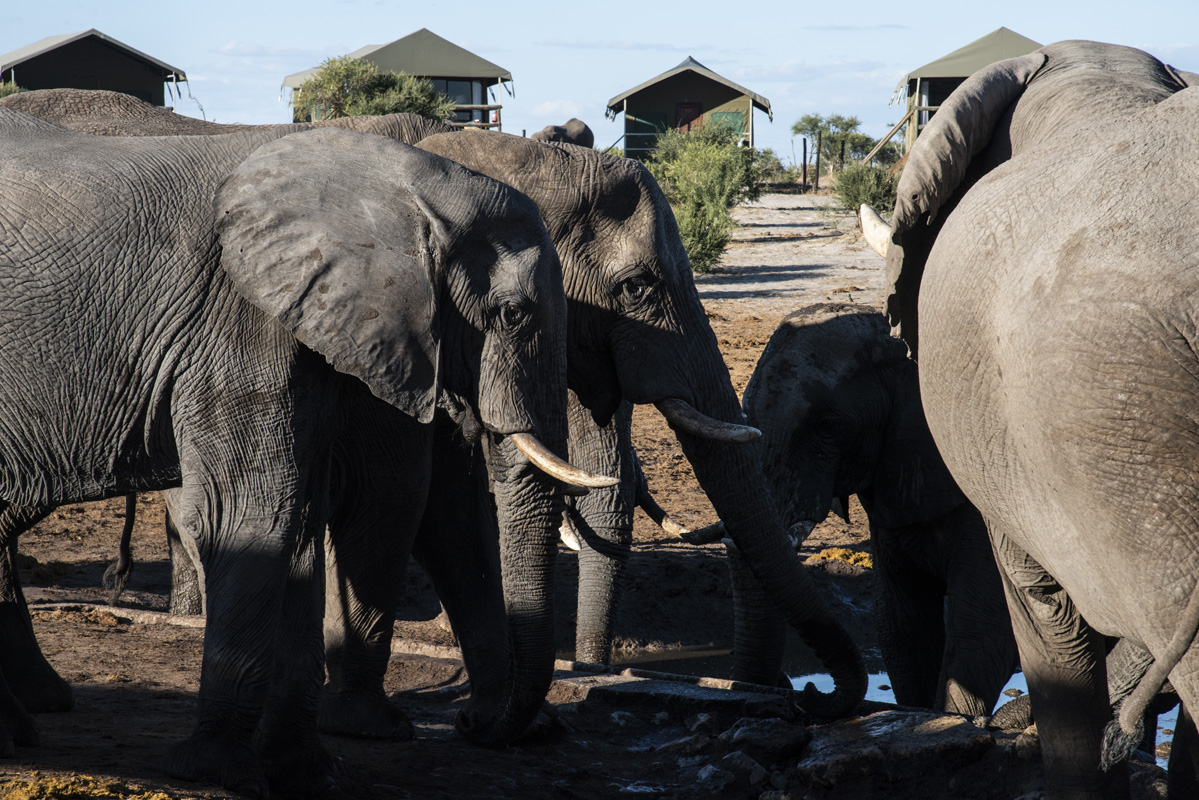
For me, the best experience is at night when the stars are bright and you’re in your tent listening to the rumbling sounds of the Elephants whilst gazing into the stars, such a magical experience!
At the camp, all the overlanding vehicles were pimped out to the nines, predominately Toyota rigs, costing well over a bar each. What was cool, was that many of the owners came over to inspect our micro-overlanding set-up, which they had serious respect for both the Jimny and the mods that I had done to it. One young man was saying to his affluent father that he should consider changing his bakkie for a vehicle like mine. I always say to people that our Jimny is small in size, but has the heart of a lion.

A ‘special’ night was had listening to the Elies making these deep vibrating sounds whilst drinking water and moving around the camp so gracefully…
Day 04:
Making our way back… up early and we hit the road at around 07:00 AM, skipping breakfast so that we could hit the Wimpy in Francistown. From there we just pushed, back to where our journey began at Kwa Nokeng Lodge. It was nice to go back to familiar comforts having spent two nights camping in the bush, I think I even ordered the same Pizza as it was so good the first time. Off to bed early to reflect on what was a much-needed break away from the big smoke.
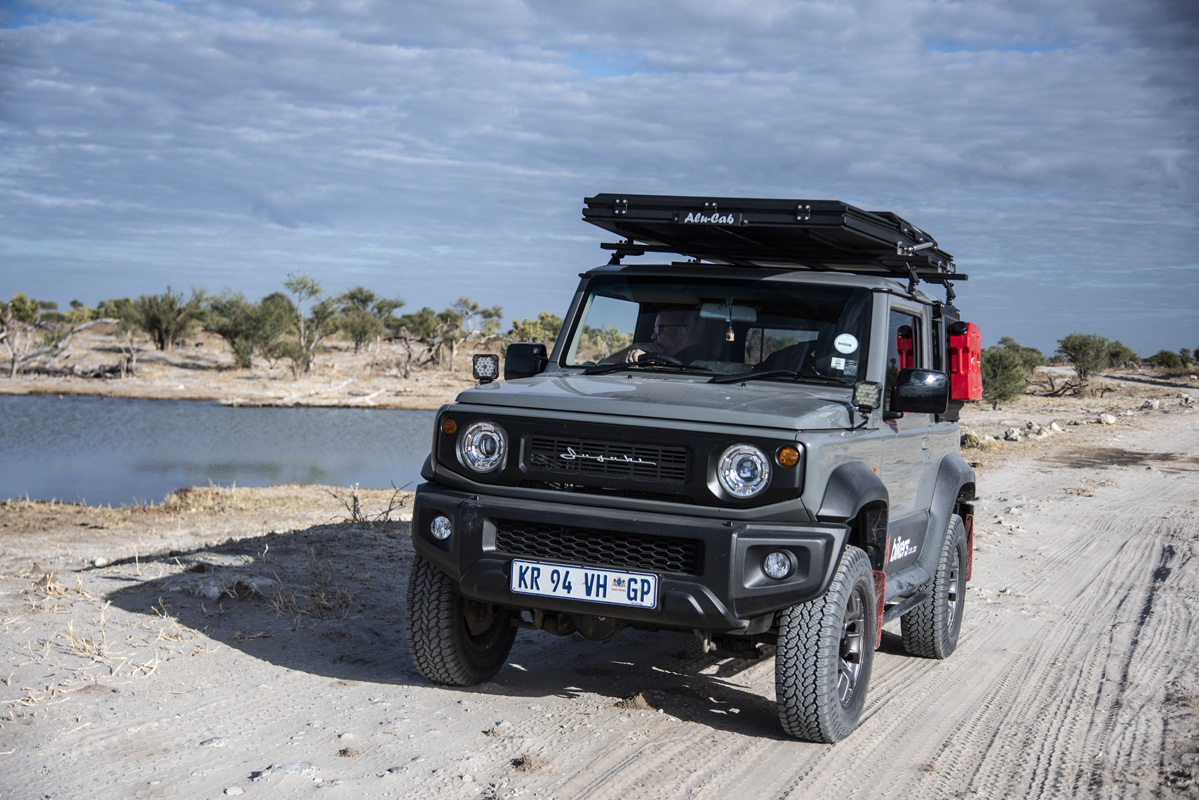
Day 05:
Up early and through the border as soon as it opened, we pushed only 432km back to Johannesburg, arriving home around mid-day. The total distance travelled was around 2000km which over 5 days isn’t that bad, it’s not that much further than travelling to Margate from Johannesburg, yet the experience is that much richer.
If you own a Suzuki Jimny—and I know there are ‘literally’ hundreds in Johannesburg as I see them all the time—then do yourself a favour and do the 5-day trip that I have outlined.
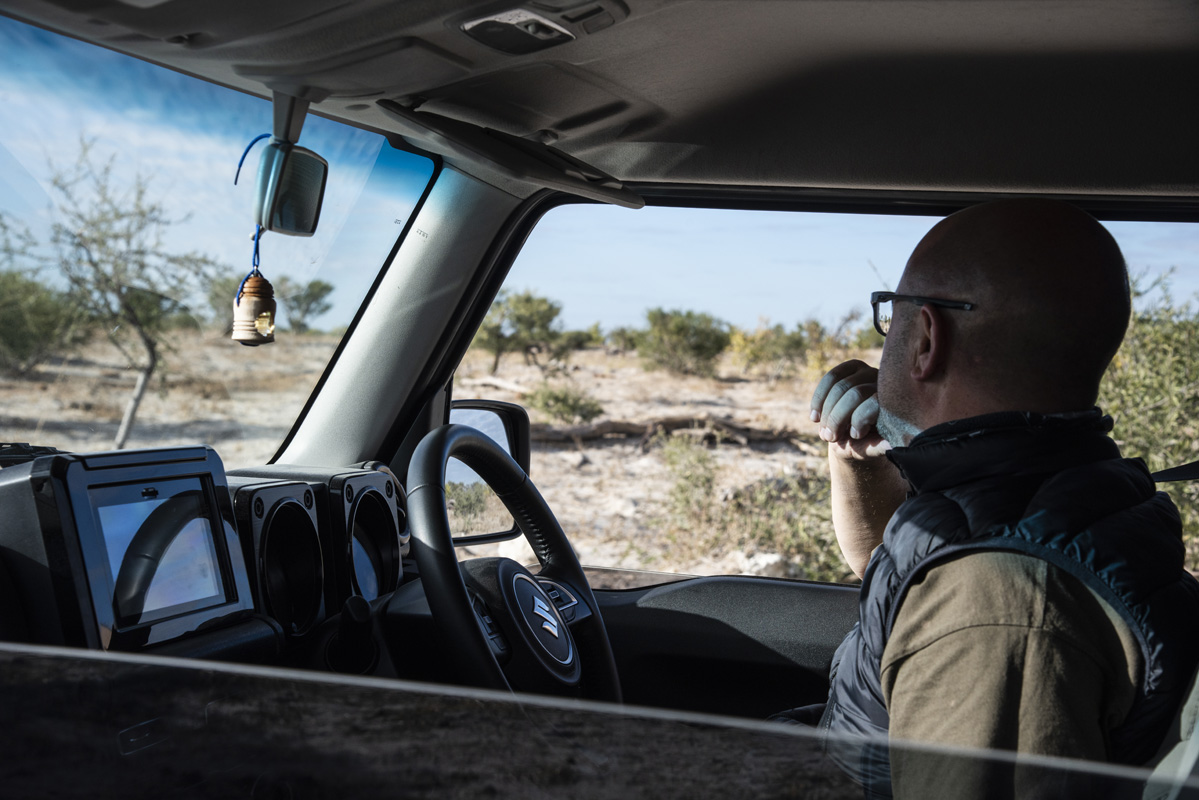
Even better, if you have a few more extra days, then loop over towards Maun, staying at Planet Baobab in Gweta (just pay on arrival as booking online is for international visitors so the cost is extremely high in USD), then another night at Old Bridge Backpackers in Maun. From there, head to Palapye via Rakops, staying your final night at Camp Itumala. This would make it a 7-day trip in total, adding approx 500km to the overall trip.

Over to soo, we arrived back home around mid-day. What an incredible experience it was,
fully rejuvenated and ready to get back into the swing of things again. We live such hectic lives in this day and age that we owe it to ourselves to take some time out once in a while to reconnect, reflect and recharge our batteries.
It was such an amazing trip! Exactly what I needed…
Thank you’s…
A shout-out must be given to our sponsors.
We’ve tested Alu-cab’s LT-50 rooftop tent now many times over and it is just so well-designed and built. Combined with an internal storage shelf, and pull-out picnic table that is specifically for the Jimny, these additions have simply made all my recent trips just that more special. See all their Jimny accessories here.

35,000km still rolling and our General AT3s are still holding up strong, we’ve travelled quite a bit of different terrain on this trip and found them to be very reliable and durable, taking us here-there-and-everywhere with ease. We did deflate the tyres slightly when going through deep sand but other than that they were pumped to 1.8 bar the whole trip—outstanding value for money and look the business.
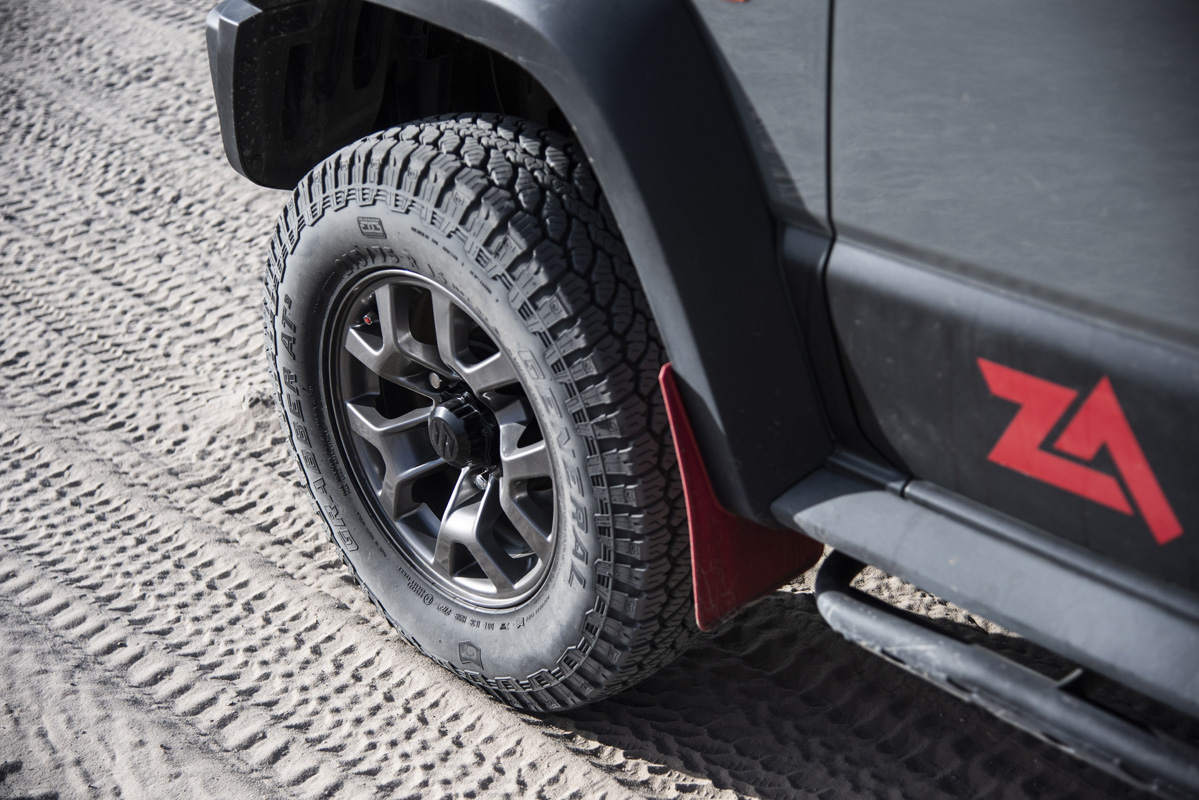
The upgraded suspension from Des Sol makes such a difference to the overall ride, especially if you are putting extra weight on the roof—like a roof-top tent for example—they even complement the tyres well for driving through twisty roads, the little Jimny now feels planted through the bends, which is superior to the standard set up and is highly recommended.
Our Takla seat covers and load liner/floor mats kept things tidy and protected throughout the trip, it’s been two years now and they just keep getting better and better—like a good old pair of jeans.
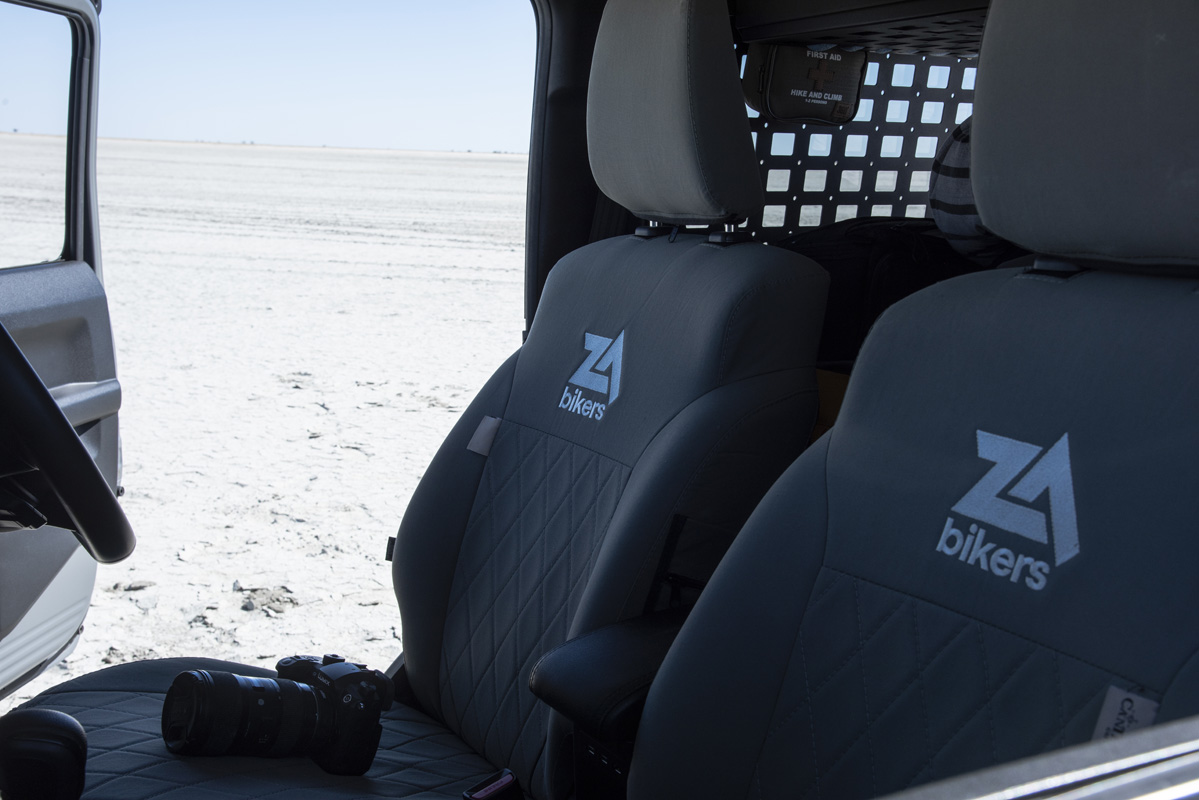
A couple of must-have Liqui Moly products that we had in our kit were Windshield Cleaner Foam and Super K Cleaner.
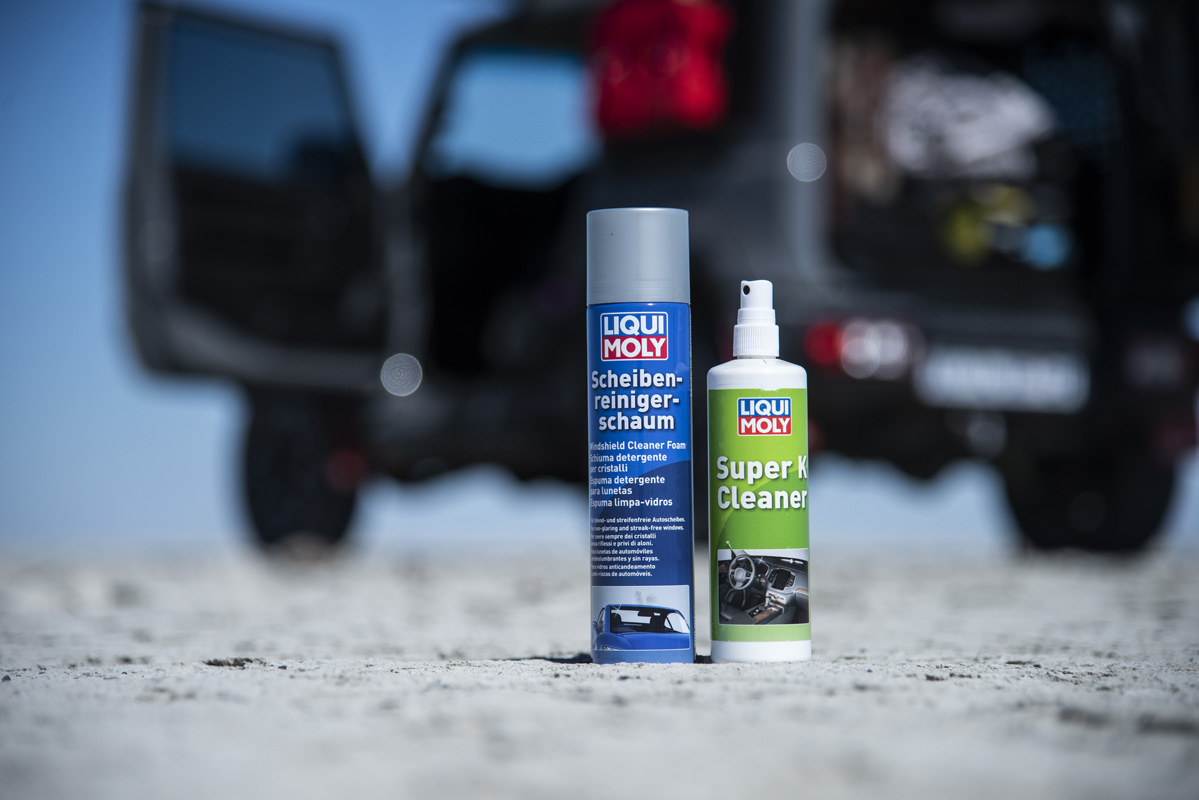
The Windshield Cleaner Foam works great when travelling, it removes and cleans dirty glass very easily. Simply spray the foam onto the window and rub it up with a micro-fibre cloth. It also leaves a protective layer on your glass so that dust doesn’t stick to the surface easily after you’ve polished your glass with Liqui Moly’s Windshield Cleaner Foam—waterless cleaning at its best!
The Super K Cleaner is super handy and works great for those accidental spills. We spilt some Coke on one of the drink holders, no panic ‘Super K’ to the rescue—just spray onto the sticky area and wipe clean.
I even found that it was good for cleaning dusty shoes, just apply it to the shoe and rub it up with a cloth. Voilla clean shoe!
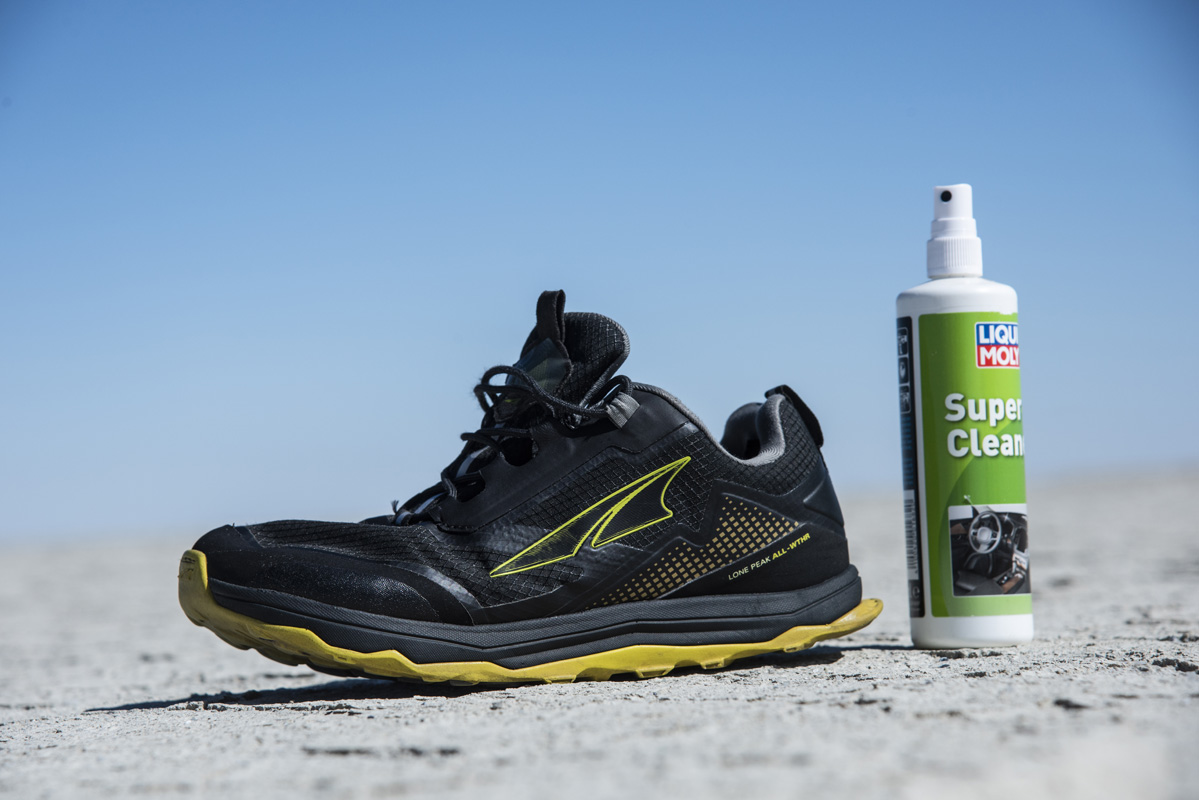
That’s what I like so much about Liqui Moly products, we often find that they have multiple applications that go way beyond what is described on the tin.
Saying goodbye…
This is going to be my last trip now with our Jimny as my colleague Dave Cilliers is taking the vehicle over from me. I’ve done as much customising to it as I felt it needed and had some very cool experiences along the way… So, it’s now time for another build-project for me under our new ZA Lifestyle brand.

Luckily it’s not over, as Dave will be keeping you updated on some of the trips that he does with the ZA Bikers Jimny—with the amount of travel that Dave does, both by bike and 4×4, you are likely to get more travel stories now that he has it in his possession.
So keep an eye out for some upcoming cool content from Dave.
As for me, I will be revealing my next vehicle project in the coming weeks ahead… Stay tuned!
Epic Jimny Botswana Trip!
Check out our cool short video below on how our trip went down…





